Don't wanna be here? Send us removal request.
Text
Artist Talk #3: Baljinder Kaur, Illustrator
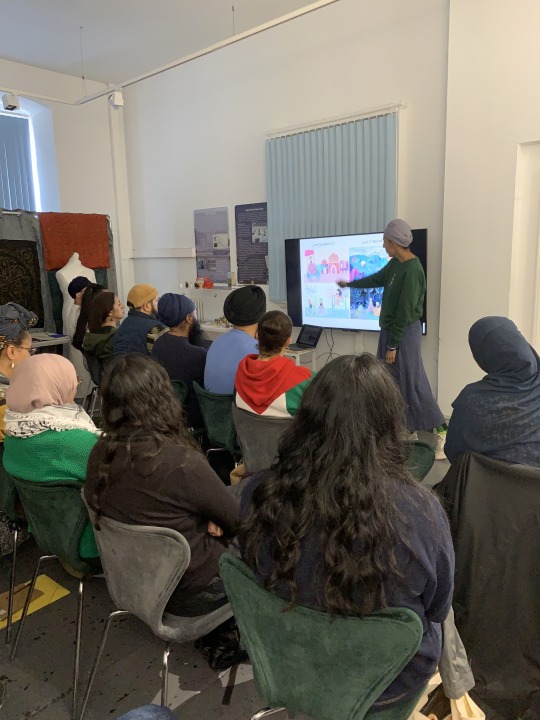
Here at the Moseley Community Hub, a lovely community building on the bustling main road in Balsall Heath, the room is pretty much packed in anticipation of a talk by Illustrator Baljinder Kaur.
Her manner is down-to-earth and humble, and makes the listener warm to her immediately.
Kaur tells us of her roots in Punjab (Northern India), and how her creative practice is largely about the ongoing struggle and desire to connect her Sikh faith and her background with her art.
BEGINNINGS OF A CREATIVE PRACTICE
Born in 1990, Kaur openly describes how she remembers being very depressed as a teenager, describing it as an ‘abyss of darkness’, and her existential crisis. Drawing was an outlet for her, and a way to process her emotions and experiences. But despite drawing every day, the idea of studying art had not occurred to her.
Tragically, Kaur lost her brother in an accident when she was just 17 years old. This was an awful and traumatic event, and she gravitated even more towards drawing.
In 2009, she enrolled on an Art & Design Foundation diploma. The opportunity for creative play and experimentation really helped with the grieving process. Her tutor encouraged her to enrol for a degree in Graphic Design and Illustration. Her artwork continued to explore grief and mortality, while retaining a spirit of playfulness.

INVALUABLE EXPERIENCES: PARIS
While studying, Kaur was lucky enough to go on an Erasmus exchange in Paris in 2012/13. This is where she identified that her life drawing skills were lacking, and that she needed to improve them in order to become a better artist. She dedicated herself to developing this skill, and it improved her confidence.
While in Paris she also became interested in experimental children’s books, and this was a formative experience for her going forwards.
Kaur tells us that her experience of studying in Paris taught her the importance of developing a daily artistic practice and having discipline.
BECOMING AWARE OF HER OWN ARTISTIC OBJECTIVES
Kaur now realised that her creative practice had 3 main areas of interest:
1.Existential: Making sense of the self
2.The desire for connection
3.The child: retaining a sense of curiosity and wonder, play, without expectation
Upon her return from Paris, Kaur made sure to try and draw every day. She was finding that drawing was meditative as well as creative.
SELF-MOTIVATION
To help focus her practice, Kaur would impose limitations on herself, such as “use only fineliner” for one week. She would use Instagram as a way of keeping to deadlines and holding herself accountable.
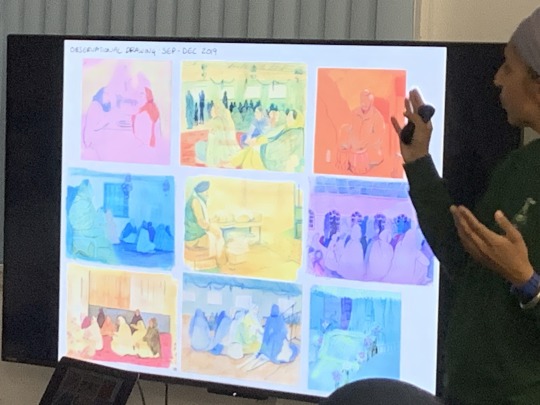
TRAVEL SKETCHBOOKS IN INDIA
In 2017 Kaur travelled to India and began to keep travel sketchbooks, documenting people and street-life. By now, she was developing a portfolio with the intention of drawing children’s books.
With that aim, she had begun submitting to publishers; but she freely admits to us that she just wasn’t good enough yet! But never one to give up, she kept practicing.
REACHING OUT TO COMMUNITY
In 2018 Kaur self-initiated a sketching project which she titled “Who is your light and why?”, focusing on documenting her local Punjabi community.
FIRST STEPS
By this time, her luck was changing and she was beginning to have some small successes with publishers, notably with the books 'The First Step', and 'Kamal’s Kes', a body-positive picture book. And yet, she still felt that traditional larger publishers were not progressive enough to publish artwork by a female Punjabi artist.

DEVELOPING A RELATIONSHIP BETWEEN OBSERVATION AND IMAGINATION
Kaur continued to draw observational sketchbooks, as a way of building a ‘visual library’ that she could draw upon in her illustration.
MASTERING HER ARTFORM
Always ambitious, Kaur still felt that her own skills fell short of her expectations for herself.
She enrolled on a Masters degree in Children’s Book Illustration at Cambridge School of Art, in 2019. During this time she really tried to confront the areas where she felt her skills were lacking.
She felt that she still couldn’t confidently draw spaces and environments, so she made that a focus. She had a lot of frustration, but then had breakthroughs by just persisting, an experimenting with different mediums.
She learned some invaluable skills on her Masters, such as storyboarding, and establishing colour palette and medium.
Kaur honed her work through a process of constantly experimenting, failing, and reflecting.
DRAWING AS A WAY TO CULTIVATE MEANINGFUL CONNECTIONS
Kaur explains to us how she sees drawing and art as a way to connect with others.
When her sister-in-law fell terminally ill, Kaur made observational drawings of her as a way to connect, without even needing words.
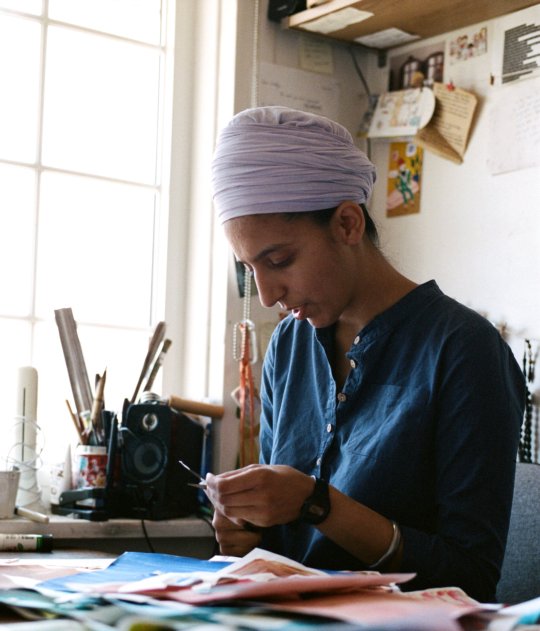
THE BIGGER PICTURE
Kaur became even more aware during her Masters that marginalised communities were not well represented by the publishing industry. Here she quotes Ranveer Singh, who says that “presence without integrity is not representation”. We live in a world that celebrates visibility as victory, in which moments of tokenism are often portrayed as transformation. But equality and inclusion are not so simple. Marginalised and oppressed minorities have to be included and given a platform where they can be their authentic selves.
In 2022 Kaur got her first publishing contract with a bigger company, and the result was the book “The Sleeper Train”. She became more encouraged that there was a market for her work.

For inspiration, she shows us a quote that says,
“Everything has been done already. But not by you and not right now”.
This is just to remind us that our individual experiences are always valuable, and that everyone matters and deserves to tell their story.
LOOKING FORWARDS
Kaur is constantly reflecting on her own creative practice. She says that there is always a thread that can link creative with spiritual or religious practices:

Kaur is very generous with her own life experiences, and clearly hopes that we can take something away that will be useful in our own lives and art.
She finishes her talk by reminding us to keep going, because the creative process is its own reward and joy.
Written by Katherine Evans
0 notes
Text
Session 2: Typography, Immigration Memories and Visual Research
By Editoriat

It’s another hot and sunny Saturday in Balsall Heath for our second talk and workshop. While the outside world is all noise and life, inside the Museum of Islamic Arts & Heritage (MIAH) Foundation, all is quiet and tuned in.
Graphic designer and front end web developer Abeera Kamran is giving a talk on typography – specifically the case of Urdu and its Nastaliq script, and how this is entangled with state, culture and identity. She shows us how the script looks – elegant, flowing, with a heritage of calligraphy, poetry and artistic practice – and how it has been beautified, even adding flowers inside the letters.
My own experience of languages is learning Latin script (abc, etc!) so this was a really interesting talk with 100% new insights.
Five things I learned about Nastaliq
(Hopefully I heard them right!)

There are 14 different ways of writing the letter B in Nastaliq, depending on where it sits in the sentence and what surrounds it. 14!
Trucks in Pakistan are often covered in Nastaliq poetry – including original works signed by the poets. Abeera says that in traffic jams in Karachi, she hopes to be stuck beside a truck – to enjoy reading it.
Newspapers in Pakistan were handwritten until as late as 1981. That’s nearly 600 years after the invention of the printing press! Imagine a handwritten version of a UK newspaper. With handwriting quality in the digital era, would it even be legible?
India’s partition in 1947 led to a distinct Lahori Nastaliq. Calligraphers developed the new style to distinguish the new Islamic republic of Pakistan from its neighbour. Abeera shows us the two styles – notably different – an example of how script and writing styles differentiates people, culture and state.
Until recently there were only a handful of digital Urdu fonts with users finding these clunky and hard to use. With digital standards mostly being set by young male coders in Silicon Valley, California, the knock-on effect on languages such as Urdu/Nastaliq could be one of a slow death. One positive comes when someone asks about the gender split of Nastaliq calligraphers. While most are typically male, Abeera tells us it is a woman who input the 20,000+ character codes for the first successful Urdu font, Jameel Noori Nastaleeq, that is still used by most Urdu newspapers today.
Memories of Balsall Heath

At midday we break for an hour’s lunch. I decide to go in search of our old family home along the Old Moseley Rd. My parents were Irish immigrants who moved to Birmingham in the post-war period for work. Dad worked as a bus driver while Mum got a job as a cleaner/caretaker for Dr Cronin’s surgery behind 444 Moseley Rd. This came with the bonus of a cheap ground floor flat. The house is still intact and rooms still rented there, as far as I can tell. Next session, we’ll be visiting Ladypool Road, which will bring more memories as Mum used to shop there for dressmaking fabric and I remember seeing beautiful, coloured saris for the first time.
A chance to share creative practices and ideas

At 1pm, we meet upstairs inside the Old Print Works. We go round and each talk a bit about our creative practices – drawing, painting, tattooing, printing, writing, zine making, art and activism – as well as our ideas for a personal project for Print and Matter. I enjoy listening to the diversity of people’s interests and look forward to finding out more about each person’s creative worlds.
I think my favourite response was someone who simply replied: ‘I like textures, like moss’. And someone else who talked about the orangey gooey centre of Jaffa Cakes – or are they biscuits? – being inspired by the orange groves of Jaffa. (I’m very much looking forward to the resulting orange print.) My own practice is multi-faceted across collage, printing, walking and activism and there’s often a focus on the (in)visibility of women in our society – but I also like drawing psychedelic neon-coloured rabbits!

Sofia explains that our work will be going into a group publication with an exhibition at the end. It seems a long way away but time often disappears so we all state some immediate next steps. But mainly, for now, we’re still learning and getting to know each other.
For the practical part of the afternoon, we quickly fold an eight-page zine from a sheet of A3 paper before Sofia dispatches us to do visual research about the building and its origins (a sticker/decal factory, as it turns out, with a motto of ‘Tell the world who made it’). We can either draw directly into the zine pages or take photos and fill it in on our return. Either way, the goal is to finish it before leaving – we have 90 minutes so there’s no time to waste. (Of course, I then use up nearly all my time wandering about this interesting venue.)
A door to discovery
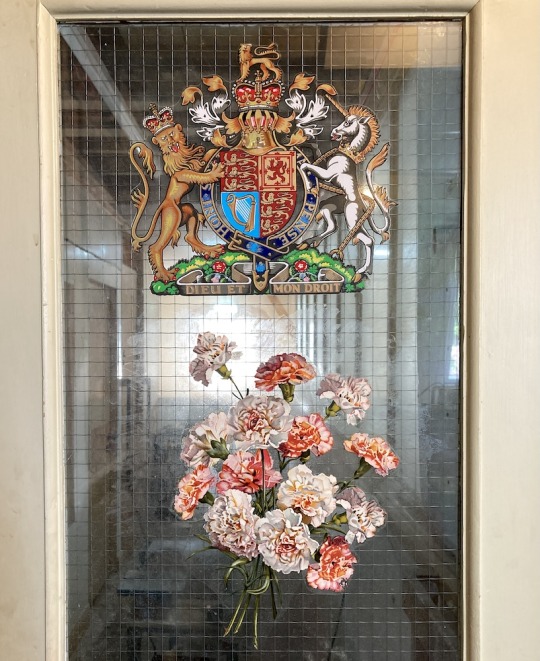
Not sure where to start, I go through a door near the loos and enter a different world. A baby grand piano. A huge vaulted light space. A giant loom. A lone sofa. A floor galaxy dotted with stars of spattered paint. Random doorways to random studios.
Finally, through a golden set of doors right at the back upstairs, I meet Richard: a wood and metalwork teacher who runs workshops for kids as young as four in a room filled with sharp saws, power tools and child-sized workbenches. He also teaches pyrography – aka "writing with fire" – which I thought fitted well with the handwritten typography theme of the day.
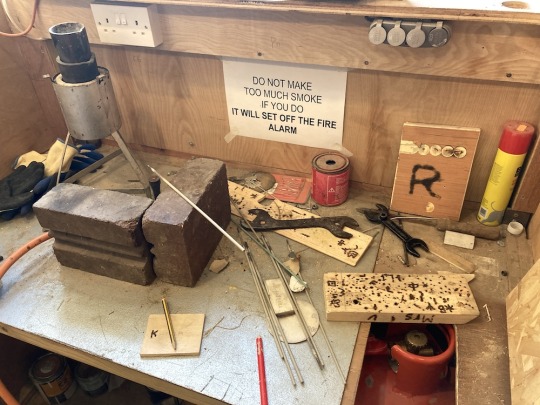
And as if the workshops aren’t astonishing enough, Richard is now in his 80s, a survivor of the Polish Jewish experience in World War 2 and full of fascinating stories. After a tour of the room, he shows me some wonderful artefacts he’s created over the years. There’s a 7.5 million word-long diary. A symphony he’s written. Another written with pupils about boatbuilding. He tells me how he uses a house brick to teach music – like architecture building it up block by block to a structured plan.
We chat for about 30 minutes before he finishes with a flourish – playing Bach’s Toccata and Fugue on a child’s Bontempi organ from the 1980s. Of all the treasures to be found at the Old Print Works, Richard is perhaps the most unexpected. In 20 minutes flat, I make a zine called ‘Surprises of the Old Print Works’.
Looking around at all the fast-turnaround zines, I can see that everyone has followed different visual paths and interests. Together it is strong. It’s amazing how a single prompt can create such diversity and creativity.
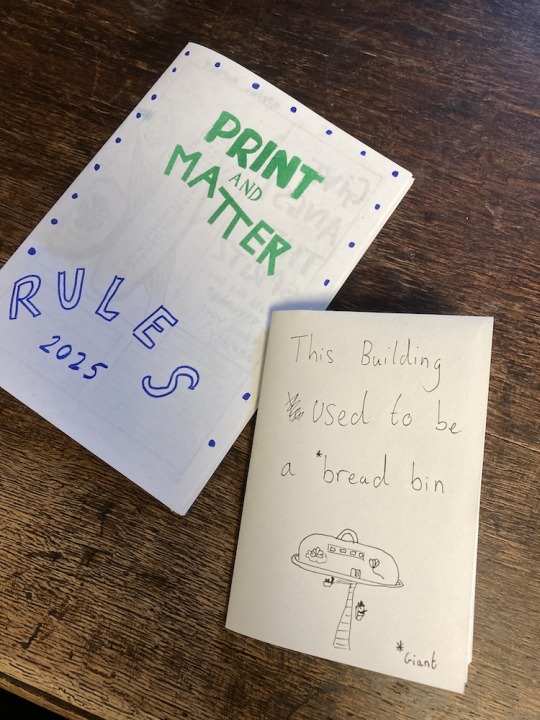
The famous riso printer!
The final element is a trip to see the riso printer – a glorious 1980s-style chunk of technology that apparently originated in Japan.

We’re here to print out our ‘book of rules’ from the opening session. I’m still getting my head around the layers and how it works but Sofia says she will help and that the point is to make printed art that we can create easily or at home.
It’s great to see this first collaboration come together and again see such as variety. I look forward to getting to grips with the layered thinking and style of riso printing. I’ve promised my next action step in the ‘big project’ is to do a test print with some collage work. Success or failure, it is all learning and I can’t wait for the next session.

0 notes
Text
Print and Matter: Session One Reflection
By Abigail Villarroel
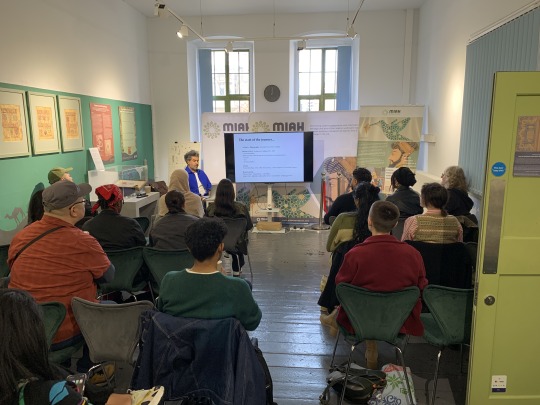
a light drenched saturday / in the heat and mortar of balsall heath / footsteps scattering / conjuring tea blacks with milk / swirling sugar and bourbons / acknowledging teeth to made but lost acquaintances / (it’s a big city / we’re wandering limbs) / birds of a feather / and wings / flapping
It was an eventful kick-off to our first Print and Matter workshop, it was a pleasure meeting everyone and it was hard to have a proper chat with everyone on the day, and this is likely a shared sentiment, but I very much look forward to getting to know everyone as the weeks progress.
✨ We began the day with an introduction from OOMK, who gave us an overview of their publishing practice, their journey into publishing and risograph printing. An ethos built around making space for people to come through the doors, try things out, and develop their voice through print.
✨ After a break, we had a talk from artist Mahtab Hussain, who generously walked us through his path — from early days working in museums as an assistant curator, to portfolio reviews, to now being an internationally exhibited artist. One of the things I took away from his talk was this idea of doing the work consistently and letting it grow slowly but purposefully. The decisions he’s made around what to accept and what to walk away from — especially when it came to exhibition spaces that didn’t match the scale or intention of his work — really stayed with me.
“I sometimes wonder what I have to add to a subject that’s already been covered so much. How do you deal with that?” Audience Member
💬 The question section of our conversation with Mahtab brought forth a lot of food for thought. In my own question — seeking clarity on how to find your way in a very new practice — he suggested therapy as a powerful tool to better understand yourself. On navigating the feeling that “this has been done,” he reminded us that each voice is unique. As a photographer who has met hundreds of people, he said he’s constantly surprised by how genuinely different we all are. That difference, he said, is our strength — and even if an idea seems familiar, it will never be the same. Do it!
lunch time / three sun-bleached chairs triangled in the yard / the breeze folding my coat away / it’s spring baby / so we’re convening over rice / chicken / apples / relating trodden roads cairo / plymouth / oxford / disparate and parallel / now munching / at the old print works / ”is it time yet?” / waved back inside / “I’ll try the jerk rice next time” / (next time)
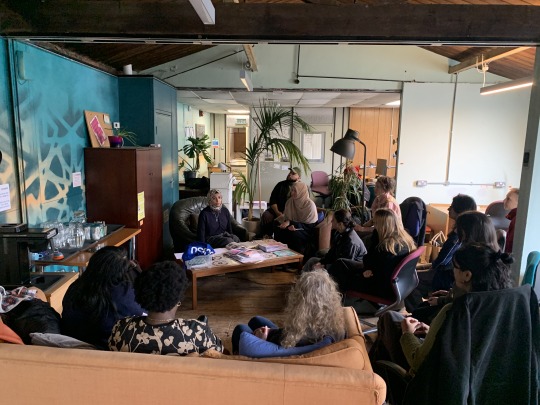
We finished the day in The Old Print Works, with an official intro to Riso printing, going through examples and reference materials, and starting to build ideas for the collaborative zine we’ll be printing together. A wave of different reactions filled the air as we passed around different zines and booklets in riso, I tried to absorb as much of the reference material as possible.
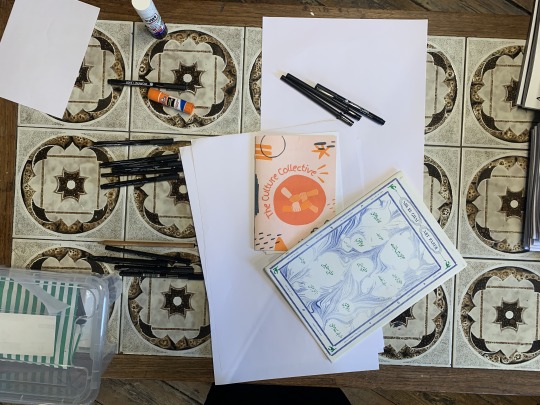
“This is really, really challenging my perfectionist tendencies!” Participant
“I’ve put my art down for a while and miss it so this is me picking it back up.” Participant
“I used to do a lot of lino and make mistakes because you’re working in reverse, all that material, that mess and you need the space too – but you can just scan this as it is (their drawing for riso). It’s so immediate.” Participant
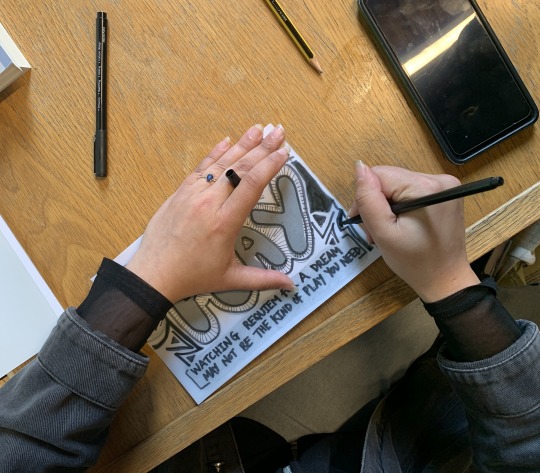
🎨 Our task was to create and illustrate a single RULE for ourselves for Print and Matter. I didn’t get the chance to ask around, and I look forward to chatting to everyone about their rule, but for the moment I can share about mine: follow your muses.

🐄 In my own practice, I’ve been exploring themes of worldbuilding, diaspora, and queerness — and there are certain symbols I keep returning to, even when I can’t fully explain why. I’m learning to quiet that questioning voice and just make the work I’m drawn to. The meaning often comes later, and that feels like the way forward. Below is a butterfly-cow with a man’s body — a nod to the Venezuelan folk song La Vaca Mariposa (Spanish for The Cow Butterfly).
🩵 This session reminded me why I wanted to be part of Print and Matter in the first place — for that mix of reflection, making, and being in a space with others who are also just trying things out. I left feeling invigorated, and excited to actually see everyone around me making new connections in their own practice.

goodbye is just a 4:00pm thing / a soft letting go / before we meet again
0 notes
Text
Call for Applications: Print and Matter (Birmingham)
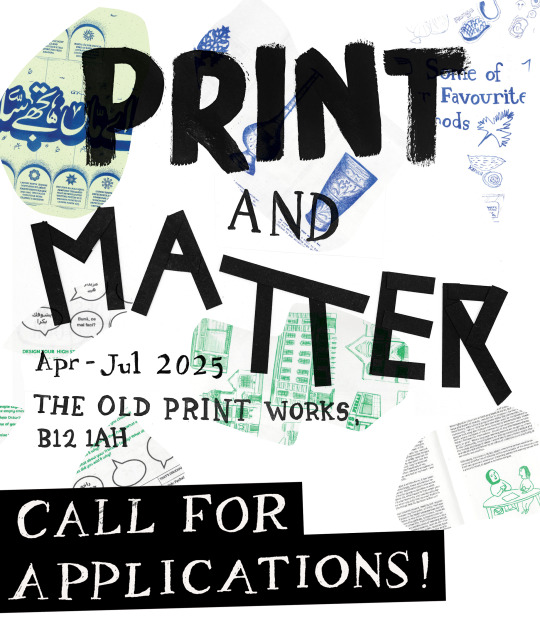
APPLY HERE
Description - Print and Matter is an art programme which will run fortnightly from April-July 2025. Over seven sessions, participants will learn a range of art-making and print production skills. Each session will begin with an artist talks from an established practitioner, providing insights into a range of art practices. Participants will develop work for a group exhibition and collaborative art publication.
Dates: April -July 2025 (fortnightly on Saturdays). All sessions are 11am-4pm on the following dates: 26th April, 10th & 24th May, 14th & 28th June (session pushed back a week due to Eid), 12th & 26th July.
Location: The Old Print Works, 498-506 Moseley Rd, Balsall Heath, Birmingham B12 9AH (artist talks will be next door at MIAH Gallery)
Applicant specification: You do not need to be an ‘artist/creative’ to apply. The programme has been designed to help self-directed individuals to create new printed work or to develop existing work through new print production skills. The sessions will be best suited to those who have an interest in art/design/film/photography/writing/craft, are open to working experimentally and are able to work both independently and collaboratively.
Eligibility: Based in the West Midlands and available to attend all 7 sessions (please check dates above). You must be 18+ to apply. This opportunity is not open to those in full-time education. There will be some priority places for applicants local to Balsall Heath.
Cost: Free
Deadline for applications: 2nd April 2025 (successful applicants will be notified by 4th April).
———————————————————————————————————————————————————————————————————————————————————————————
The fourth edition of Print and Matter has been specially designed for those wanting to dedicate time to developing art and design skills and working towards completing a personal print-based project in a supportive environment. Learn about art and design through a series of printmaking and production workshops. With a focus on self-publishing, create a range of art outcomes including zines, posters and postcards, contribute to a group Art Paper and be part of a group exhibition. The programme will take place across The Old Print Works and MIAH gallery (Balsall Heath).
The programme consists of a series of 7 sessions, each with a guest lecture, practical workshop (including Risograph printing) and 1:1 or group feedback. You can learn about past sessions from the Print and Matter Blog. The sessions are scheduled to run from April-July 2025 fortnightly on Saturdays (11am-4pm) with an exhibition in October (exact dates tbc). We especially welcome people who live in/near Balsall Heath to apply. There will be provision and breaks for prayer for those wishing to pray.
While the workshop sessions are only open to successful applicants, the lecture series, featuring an exciting range of established artists, designers and illustrators from Birmingham and beyond (including Mahtab Hussian, Sabba Khan, Abeera Kamran, Lisa Rahman, Faisal Hussain, Baljinder Kaur and Sahra Hersi), will be free and open to all. Please check back in April for the schedule.
Print and Matter is supported by OOMK, Arts Council England and Grand Plan Fund.https://printandmatter.tumblr.com/ / www.oomk.uk / https://www.rabbitsroadpress.com/
0 notes
Text

Print and Matter 2023: CALL FOR APPLICATIONS
Session Dates for Print and Matter: 1-4pm: 18th Nov, 2nd and 16th Dec, 6th Jan
Location: The Old Print Works, 498-506 Moseley Rd, Balsall Heath, Birmingham B12
Eligibility: Over 18 and must not be in full-time education. Applications are very welcome from anyone who is interested in the workshop series but we especially encourage those with South Asian heritage or living close to The Old Print Works (B12) to apply.
Cost: Free
Deadline for applications: 27th October 2023
Application decisions will be made by 3rd November 2023
Print and matter is back! For this edition we’re teaming up with True Form Projects (https://www.trueformprojects.com/) and drawing inspiration from record sleeve artwork from their collection to explore art, design and printmaking. The collection centres around South Asian music from the 80s and was rescued from Balsall Heath’s very own Oriental Star Records when it closed in the 2017. The shop had been pivotal for the distribution of music and audio including nasheeds, qawwali, bhangra, classical, ghazals and many more genres. The collection is one of the largest of the music of South Asia in the UK and was also an important site for the distribution of music being made by South Asian diaspora in Birmingham and beyond.
Print and Matter workshops (4 in total) will take place fortnightly on Saturdays across November - January. Sessions will explore printmaking techniques (including risograph printing), the use of image, text and pattern in album artwork and participants will be encouraged to create work inspired by their own heritage and the local area. By the end of the workshop series, participants should be equipped to make their own record sleeve, it could be for a nasheed band, favourite musician or fictional band.
Print and Matter is free and we welcome applications from anyone interested in the workshop series. We especially encourage those with South Asian heritage or living close to The Old Print Works (B12) to apply. While the workshop series is free, participants are expected to attend all 4 sessions so please ensure you are available for the dates before applying.
If you struggle with writing, feel free to answer the below questions in bullet points or make a video/audio recording answering all the questions instead and add a link at the end of the form (write ‘video below’ in sections where a written response is indicated as *required).
———-CLICK HERE FOR APPLICATION FORM———
You can learn more about Print and Matter here- https://printandmatter.tumblr.com/. Print and Matter is an OOMK/Rabbits Road Press project.
0 notes
Text
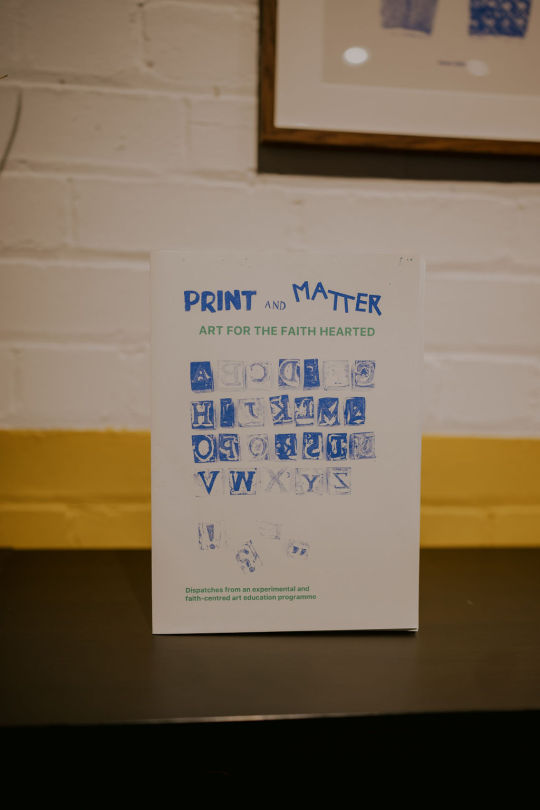
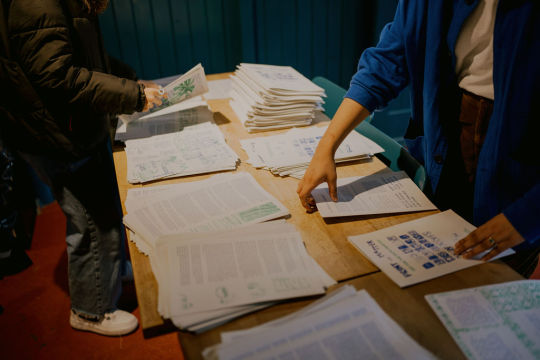

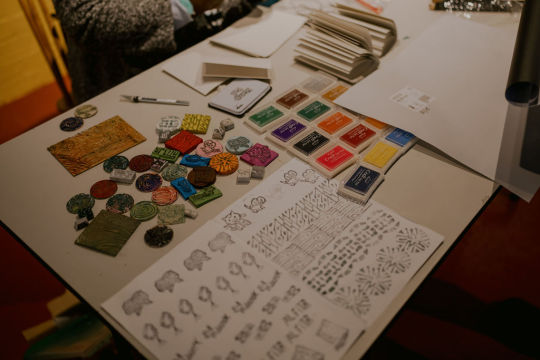
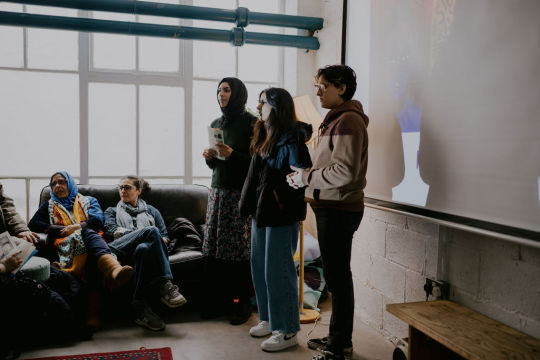

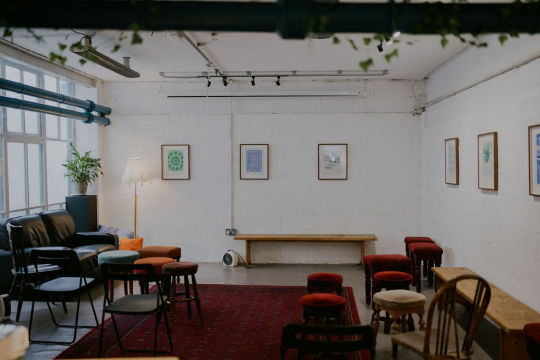

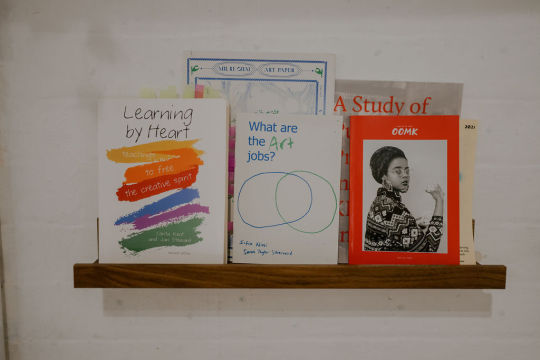
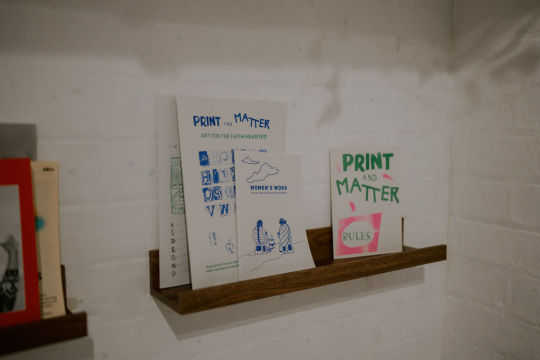
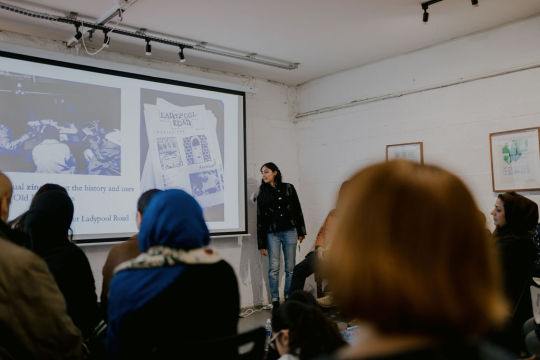
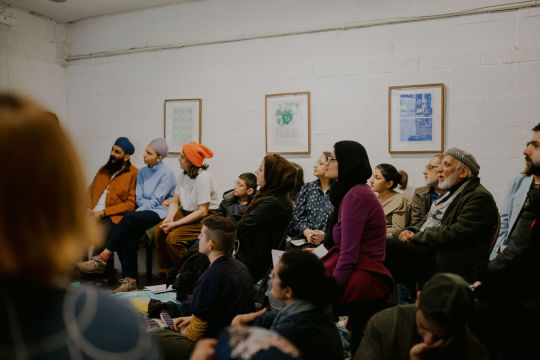


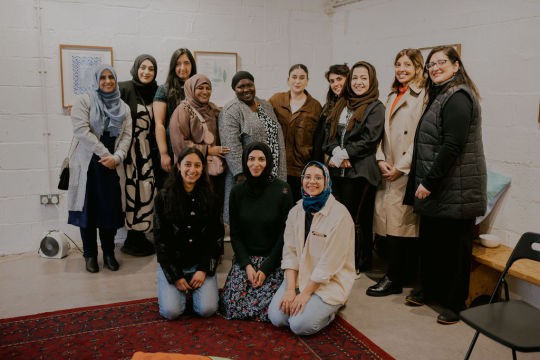

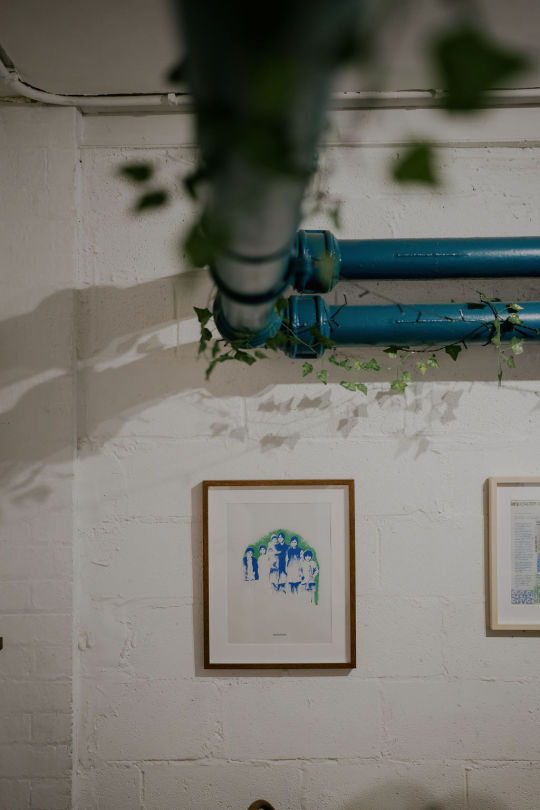
0 notes
Text
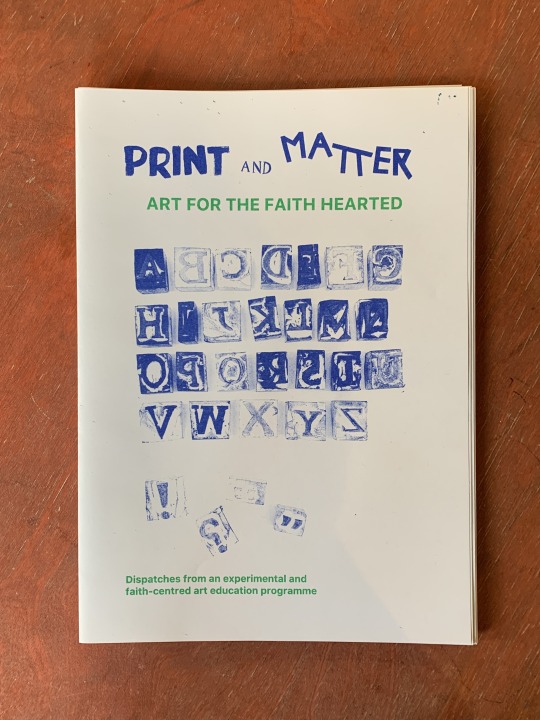
ON SALE NOW - PURCHASE via https://www.rabbitsroadpress.com/shop/print-and-matter-art-for-the-faith-hearted
0 notes
Text
Session 7: Taiba Akhtar and Lisa Rahman
Written by Abla Ebbiary
Today was our last session a the Print and Matter School. We were lucky enough to be visited by not one, but two talented creatives, Taiba Akhtar and Lisa Rahman.
Taiba Akhtar is an artist, printmaker and gallery information assistant based in Birmingham. She became interested in art at a young age after deciding that academia wasn’t for her. She found that she had natural talent when it came to art making and was quickly drawn to print-making and sculpting which she later further explored through her many degrees. Taiba completed an Art Foundation, BA (Hons) in Fine Art, and Masters in Fine Art. Since completing her MA in 2020, she has continued her art practice and has also taken up a position as an Information Assistant at Birmingham’s beloved Ikon Gallery.
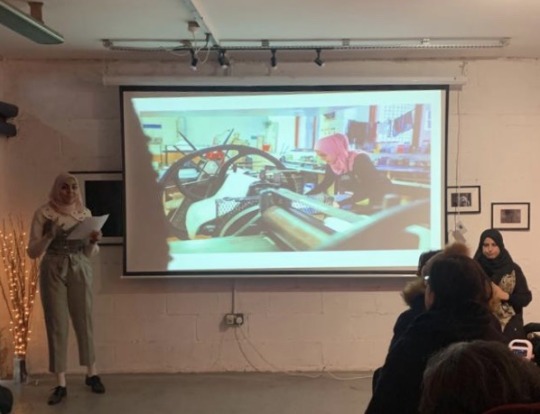
Taiba’s work explores the organic nature of creating textures and prints by hand, etching being one of her favourite techniques. Etching is a print-making technique where a design is scratched onto a coated plate, a strong acid or mordent is then used to cut into the scratched away areas creating a plate with an ‘indented’ design that can be inked up and printed. The outcome creates a raw, sketchy prints with so much depth and dimension, despite it being 2D.
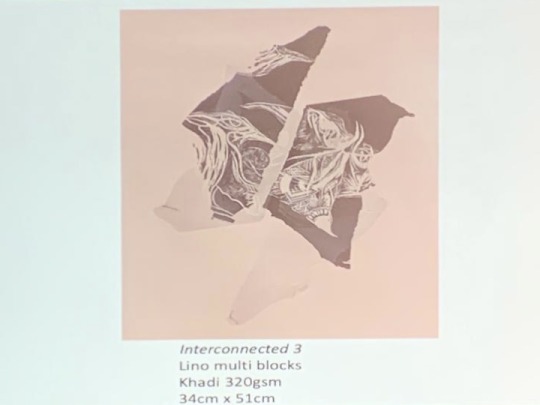
Taiba beautifully guided us through her education and working career, quite literally her CV. She is a fantastic storyteller, she described processes which could have come across as tedious, and overwhelming for some, in the most pleasant and poetic manner.
I felt as though there was an underlying theme of growth, and growth into ones’ self, something many of us artists experience personally and creatively. At times, it almost felt like a spoken word performance about her finding her feet as a young Muslim artist (I have a soft spot for coming-of-age stories, so let me have my moment!) It wasn’t until after her presentation, she told me “I never used to raise my hand in class, now I can’t shut up!” – I love that for her, we all did! I’m so excited to keep up with Taiba’s journey!
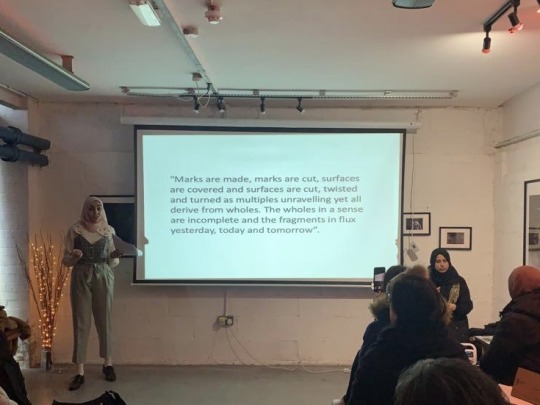
Taiba shared her thoughts on the art-making process, which reminded me of something an old art teacher had told me. When she completed a final piece, she was often underwhelmed, and momentarily disappointed with the outcome. However, she came to realise something that was more important, the process. What she had learned through undertaking a project, the skills she gained, the message she put across, and the feelings she evoked through her work, became the things that were most valuable to her. I think we can probably relate and learn from this.
Our next guest speaker, Lisa Rahman is a creative director and graphic designer from London. Like Taiba, she completed an Art Foundation to discover her niche. Throughout her arts education she was attracted to graphic design and the potential it offered for telling compelling stories. She also developed a love for hand-drawn lettering, something she stills returns to in her commercial work today. Upon completing her studies, she undertook an internship at Elle where she climbed the ranks to became Deputy Art Director. She went on to work for other fashion and lifestyle magazines including Glamour and Lula and has also pursued independent freelance work, lecturing at Chelsea College of Art, and mentoring through various arts organisations including Rabbits Road Press.
Her role in creative direction involves communicating stories through the design, placement and curation of text and image, commonly in the form of magazine spreads. It was evident through Lisa’s work that her mission is to add a deeper meaning to the world of fashion and lifestyle, the world synonymous with the superficial. She stated that she “wants to take the reader on a journey, to tell a story about the person being photographed.”
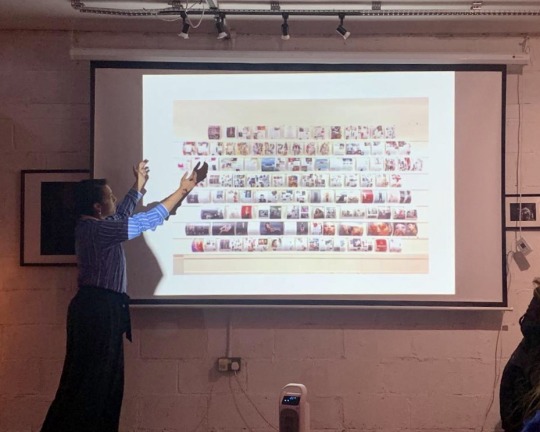
Lisa uses an adjustable ‘flat wall plan’ to help organise the order of pages in the magazines she curates. As the editorial shoots and brand advertising content comes in, she rearranges the flow of the pages to create certain moods and cohesive narratives. I found this particularly useful to hear about since it’s an approach that could be applied to any form of art or information organising and display, whether it’s planning future posts on your Instagram feed, or deciding how to display a series of paintings your living room.
One of my favourite works Lisa presented was the ‘Millennial Pink’ editorial. Fashion publications often dedicate editorials to showcasing colours that are trending or are set to be in fashion, suggesting simple ways to incorporate the colour into your everyday wardrobe. What even is millennial pink? Lisa decided that a fun way to present this colour trend might be to display examples of millennial pink objects in a Google image search style page, with great results! Whether Lisa intended this or not, she creates work that is relatable and palatable to the audience.
Hearing about some of her positive experiences of working as a Muslim Woman of Colour in fashion journalism and branding was refreshingly reassuring. Recalling her experience, she felt like she ‘didn’t have to perform to be seen.’ It is empowering to know that she felt confident and comfortable to show up as her true self and got through by just doing the work, she didn’t have to have a massive personality or big character like many others in her world.
I feel like some of us creatives grow disillusioned in the pursuit of becoming successful artists. Some of are stuck between wanting to practice the art we love, while also having to work to make a guaranteed, stable living. It’s people like Taiba and Lisa that reassure and remind us that we can pursue art to whatever capacity we want to, and that our journey is our art, not necessarily the outcomes. I am so happy that the students of the Print and Matter school have taken steps to achieve this. Many of us enrolled in this school for different reasons. To take time out of our working life to invest in the arts, to connect with fellow Muslims that have a passion for the arts, something we all feel has been lacking in our art journeys.
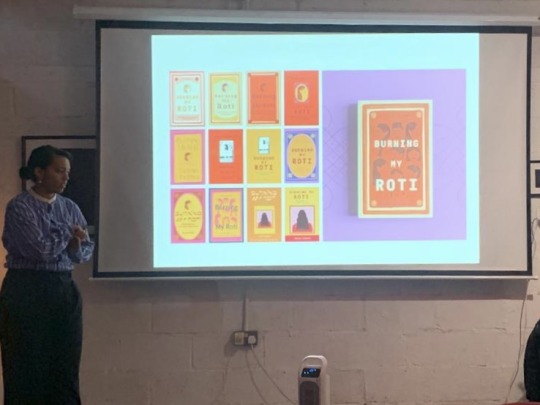
Thank you, Amal, for investing in the Muslim community, and bringing creatives together. Thank you, Sofia, our amazing tutor, for mentoring and supporting us over the past few months and to all the guest speakers, for inspiring and motivating us in so many ways. Finally, thank you, The Gap, for hosting us and making us endless cups of coffee and hot chocolate!
Come along to the Print and Matter Artists Forum where there will be talks, discussions, an exhibition of work made during Print and Matter and the launch of our collaborative publication. The event will take place at The Gap (opposite Moseley Road Baths) on Saturday 18th March, 12:00-17:00. See you all there!
#printmaking#etching#fineart#typography#creativedirection#artdirection#communityart#culture#muslim community
1 note
·
View note
Text
Session 6: Faisal Hussain and Monoprinting Workshop

Written by Yasmine Ahmed
For some time now, on my way around the ‘edgy’ yet ever close-to-gentrified streets of Digbeth (before you say anything, I still love Digbeth) I would stop and look up at the sign ‘stop colonising our future’. It kind of catches you off guard, a sort of clementine moon above a graffiti-filled building, a pleasing circular frame, with a bright orange jalebi-coloured background and Arabised font. I always thought it was cool. I thought someone had put it up as two fingers up to whoever was trying to add more mini golf places to the area, potentially driving any other organic business out; and then I attended this talk, by the person who had been behind this.
This is part of a series of other signs, speaking to the racialised connotations behind legislation around protecting our cities (from who I wonder?), and the whole time he was talking I could have kicked myself for not knowing his work sooner. I’ve actually kicked myself plenty of times during my journey with Print and Matter because I never knew people like me existed in Birmingham, yet here was another troubadour, reclaiming his city as an artist and activist. I remember we were talking at the start of the lecture, and he said something profound that really punched me in the gut: ‘we aren’t allowed to be creative.’ He was referring to our marginalised communities, our lack of exposure to the arts, our need for acceptance, and our basic rights for safety and security not being met. In this one line, he was talking about so much.
Faisal Hussain is a Brummie-born artist, whose work covers what it means to be a Minority and British in a society of hyper surveillance. Much of his work analyses the intrusive Prevent ‘industry’ and creates a space where his sculptural works highlight the often callous attempts by the government to highlight Muslims as problematic and unable to integrate.
Faisal talked to us about alternate notions of security and how he has personally supported communities within Birmingham and beyond to navigate and make sense of what was happening. His work also encompassed giving space and highlighting key individuals which had shaped his life in a series called ‘The F.light project’. I could feel myself getting angry at the industry that had caused all of this to happen, as well as overjoyed that I was listening to a true pioneer in his field, someone who was very much an activist, highlighting the injustices that have been caused to our communities, creating eye capturing and fiery pieces as a response to this climate of fear-mongering. I learned that anger was a necessary emotion to fight injustice, and was often an imperative feeling for creativity that spoke to a very real emotion that, as minority voices, we often hold inside of us.
Faisal walked us through his journey of understanding what art was, he spoke about moving away to an art college in Cornwall and how ‘difference becomes very apparent when you’re a landmark’. He touched on how his experience being away from home had taught him emotionally what art meant;. After spending years away, he came back equipped with a traditional fine art skill set as well as feeling disheartened by his position in art as an industry, which led him to rekindle his affinity for where he grew up. He spoke about all the businesses he had visited working for his father, and how due to gentrification a lot of those original businesses were no longer stable and did not have a voice. Part of Faisal's work is about documenting these businesses and what they meant for Birmingham and the Midlands. A part of the signage series that he has created also touches upon using shop signage as a platform for subtle yet evocative messages. If you look around the area you will spot signs that say ‘see it, sort it, racist’ as a backlash to these negative and damaging attitudes, as well as ‘othering’ of our community that has been so prevalent in so many of our lives. I thought about how much time I have spent trying to package myself as ‘beyond good’, wanting to be accepted by educational institutions and companies that will not accept you just as you are if you have any kind of ‘protected characteristics’, and always feeling like someone is scrutinising your every move. Faisal's work also made me internalise the notion of art being used as activism and the various mediums you can use to achieve this.
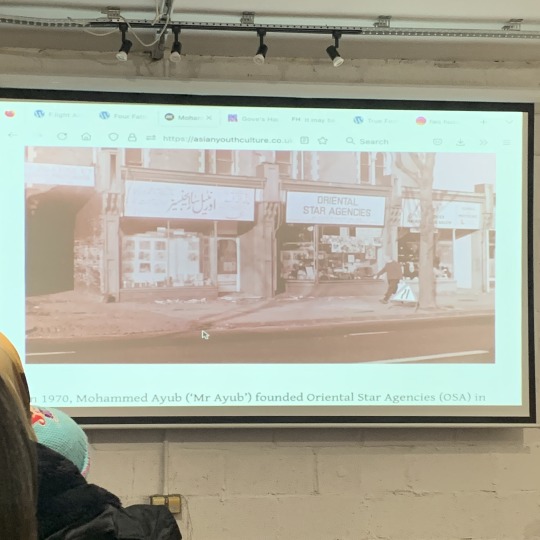
A key moment and highlight of Faisals talk for me personally was when he went onto talk about his experiences with landmark Birmingham business Oriental Start Agencies, a Pakistani record store in which Faisal is now leading on archiving 100s of vinyls for. Having visited Oriental Star as a child and this being a pivotal part of my upbringing, I was overjoyed that someone else also had such a positive experience of this niche yet groundbreaking record store, which had served our community in Birmingham for so many years.

Faisal’s art often incorporates humour into it, I smiled wryly when someone asked him the reason as to why he chooses to be humorous in some of his sculptural pieces, and in urdu he replied ‘I’ve wept and wept so often that I have died’. He went on to explain that sometimes reality is so harsh that humour is a great combative to those feelings of anger and despair. He was also referring to his exhibition at Centrala where he talked about the ‘Gove Horse’ as a response to the Trojan Horse scandal that damaged so many Birmingham schools.
What I also gained from sitting on this lecture was a new found understanding of the necessity for play and exploration in a world where as British, Asian or Black Muslims we are not allowed to be seen as creative and playful, from a familial and institutional perspective. Faisal channels his anger in such a beautifully creative way, reclaiming font and colour from an eye of scrutiny, and incorporating this into everyday items from shop signage to vinyl records. He also talked about needing breaks frequently, and his vice of choice being lego and building when he feels overwhelmed by the work he is doing. I then realised that Faisal was also a nerd. Hooray for the arty nerds!
I have said it at the start and I'll say it again, I can't believe I’m only now finding out about Faisal Hussain, his work being so imperative to my way of thinking about the city I was born and living in. I’m really excited to spend some time finding out more, and will definitely be visiting some of the exhibitions that are currently live.
The Art Class
In this session, we learnt how to do mono-printing. I had not, up until this day, found out that the humble plastic carrier has so many different uses. Sofia showed us how to create interesting patterns and textures using oil based paints and designing patterns onto framed sections of paper.

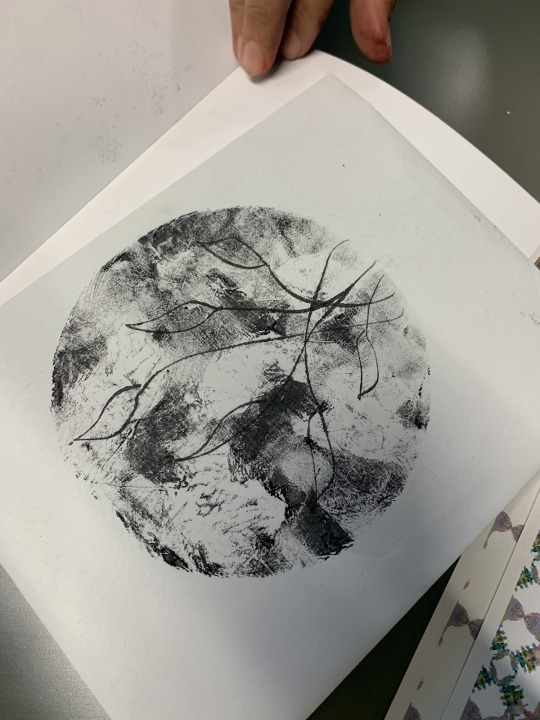
There was also an opportunity to risograph print work that individuals had been developing in their own time including illustrations, photographs and patterns.
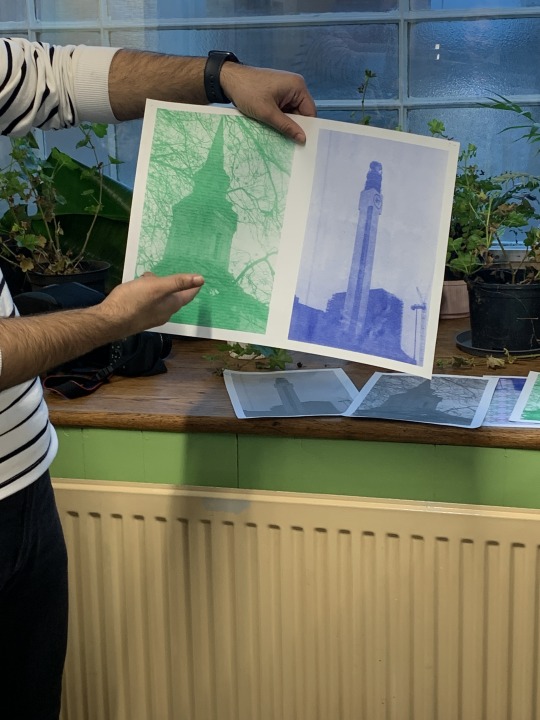

I sometimes get a bit overwhelmed about how amazing everyone in the class is at creative endeavours! Not brave enough to do a whole print, decided to doodle some Urdu words onto my monoprint as I was inspired by the recent talks about reclaiming text and font. As you can see from the images, some people created photo style prints and cards using this technique which as a finished product looked incredible.
I feel so grateful to be a part of Print and Matter, and appreciate how being a part of the class has allowed me to be creative in so many different and unique ways.
1 note
·
View note
Text
Session 5: Abeera Kamran & Pattern Making with Stamps
Written by Hannan Almasyabi
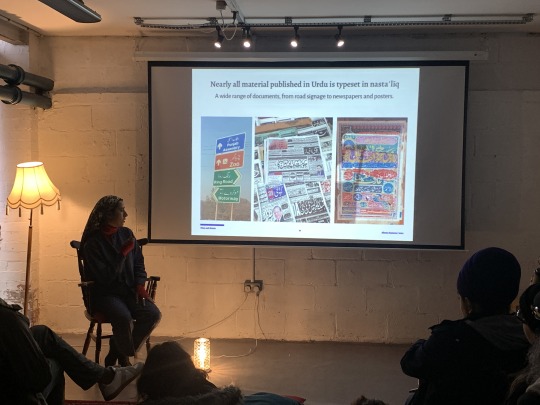
This week's session began with a fantastic talk from guest speaker Abeera Kamran, which was especially interesting for me, as I found it reminded me of that ever-old debate of 'art vs STEM subjects' and 'left side of the brain vs right side of the brain', where it's suggested that instead of both coexisting, it must be a choice between one or the other. Abeera's talk was a clear demonstration that there is no conflict between creative expression and practical need as she took us on a journey through Urdu's deep ties to identity, history, the practical hurdles and all-round accessibility.
As someone from a non-South Asian background it was a fascinating glimpse into a language I knew next to nothing about and provided me with a deeper appreciation and some small understanding of the language and it's beauty.
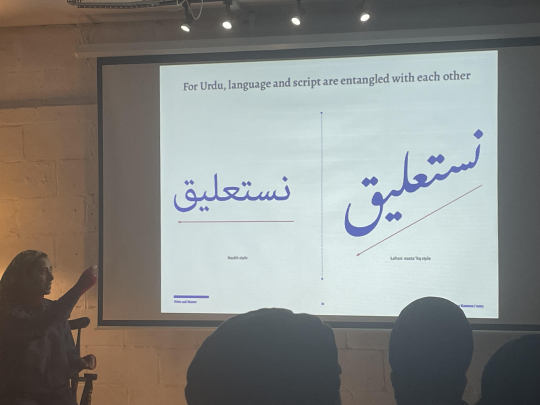
To give a bit of context to the speaker, Abeera Kamran is a graphic designer and front-end web developer based between Birmingham, UK and Karachi, Pakistan. Her work encompasses web design and development, typography, publication design and more. During her talk, she highlighted a range of different projects she'd worked on including several that featured the Urdu language, outlining why the way that Urdu was presented in each print and web project was very particular to ensuring that key information was conveyed appropriately to an Urdu speaking audience. Abeera recently completed an MA Research in Typography course at the University of Reading, her research looked at the challenges surrounding digitizing the Urdu language including the historical, cultural, design and technological complexities surrounding the typographic representation of the popular Lahori Nasta'liq in web browsers.
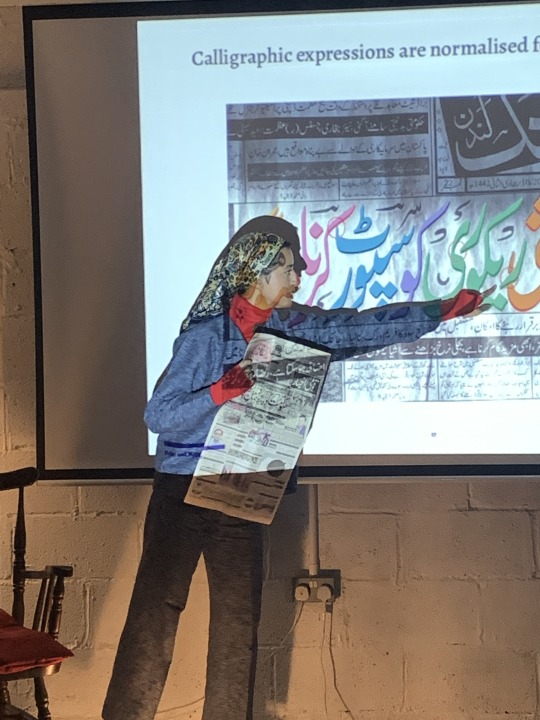
In the image above, Abeera demonstrates to us how letters in the Nasta'liq script not only start higher up at the beginning of the word and move down, but words overlap, making the move from traditional, handwritten content to digital much more difficult. Because of this, Abeera shared with us that "Urdu newsletters were still handwritten until as late as 1981 whereas mechanised printing was already in use in East Asia as early as 800AD and in Europe as early as the 15th Century." You can find more about Abeera Kamran and her work here.
The Art Workshop
This week's creative session built upon the previous session where we used erasers from your everyday stationers to create alphabet stamps, however this session we focused on making patterns. This was a nice reminder that art can be created with basic and affordable everyday materials, challenging the misconception that art is an expensive hobby. Many of us opted for designs that could easily be used to make repeat patterns, we went on to experiment with different ways of tiling the same stamp. It was fascinating to see the diversity of patterns we came up with, there were floral patterns, abstract patterns, designs featuring simpler line work all the way to intricate designs inspired by Portuguese tiles.
In my own work, I also experimented with the type of ink used to stamp with, as this gave an entirely different effect. I used the traditional stamp pad but also tested out printing with Indian ink, as the Indian ink is much darker and thicker in texture it provided a very similar style to a Lino-print which I preferred to the stamp pad effect.
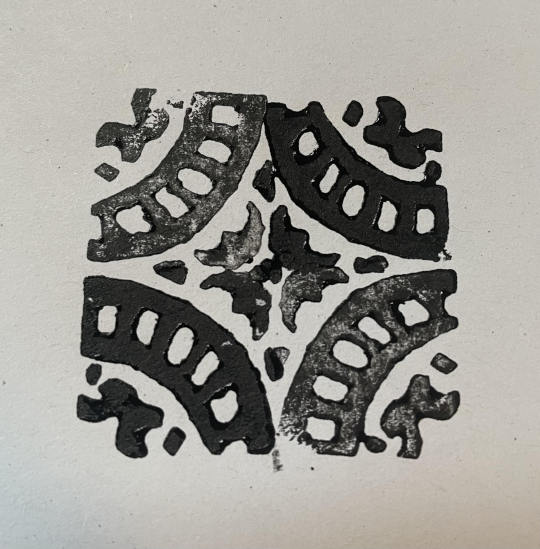
Here's what my repeat pattern looked like in a 2x2 grid which I was pleased with! You can see how it differs to the stamp pad print. Below are a couple of examples of fantastic designs that were made. You can see how the same stamp changes based on how they are tiled, creating entirely different designs. Some of us even made repeat patterns combining two different stamp designs into a single print to create something entirely new. I loved seeing everyone's creative expression and ways they thought outside the box!
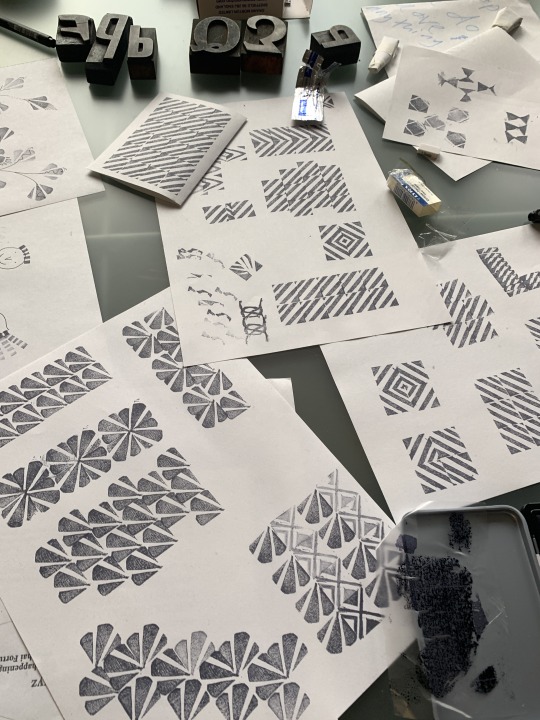
Follow-up from last session
In addition to the art workshop we ran, we also printed 'Ladypool Road: Impressions', a booklet about our impressions of a local road/high street we visited in a previous session. During the walk, we all did some visual research using illustration, photography and writing to document our walk. Everyone went away and worked on their pieces separately, so it was great to see some similar themes emerging in the way art pieces were interwoven in the booklet whilst simultaneously seeing the different individual perspectives everyone had even through we were all looking at the same street.
We used the Risograph to print this and went with a two-colour print of black and green which worked well.
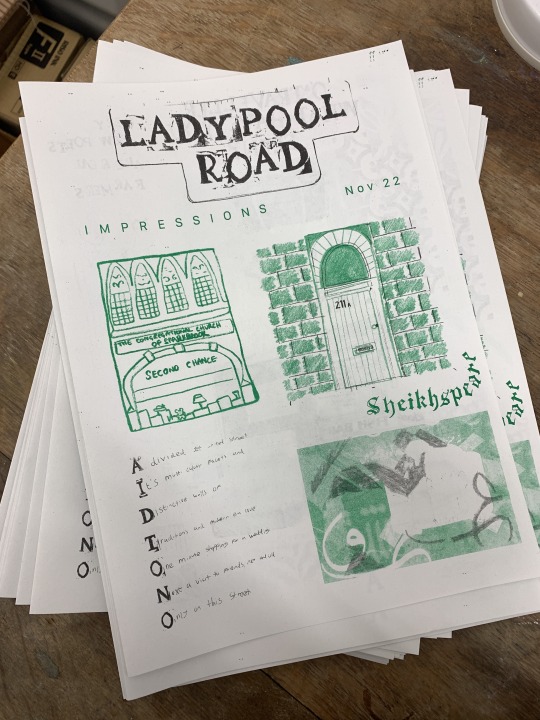
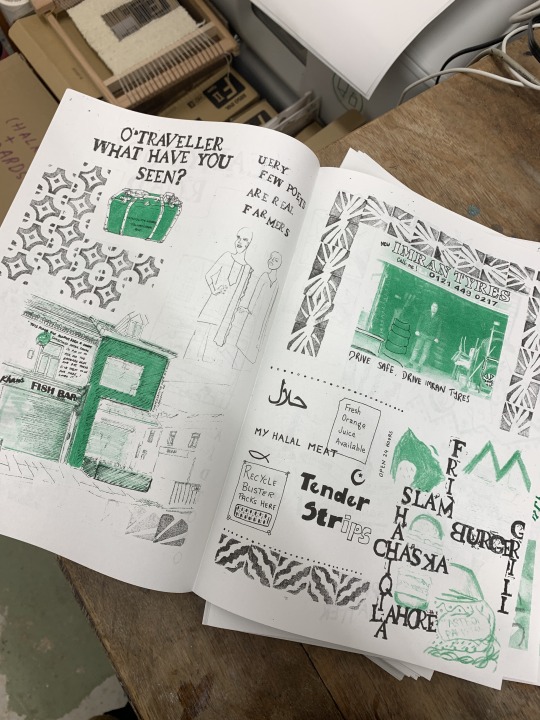
I love the final result and the mix of patterns from this session's rubber stamps which made for good segment dividers between different themes running across the pages. It was also interesting to see how some attendees prioritised text whilst other's focussed on imagery, some producing very literal observations and others more abstract or personal reflections. I think one of the more difficult things to do in art is collate several different art styles and pieces into one cohesive flowing document which we achieved here!
Looking forward to seeing what we do in the next session and what new techniques we explore and lessons we learn from our guest speaker.
2 notes
·
View notes










